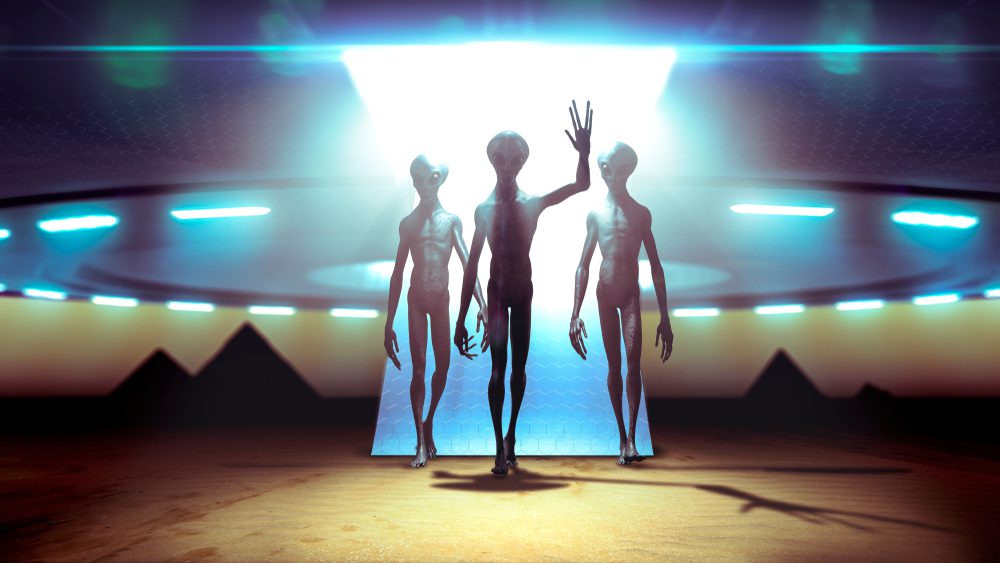One of the biggest questions of both the 20th and 21st century is quite simple: do aliens exist and if so, when should we expect them? No matter how far technology seems to go nowadays, it still doesn’t seem enough.
Yes, we might learn everything there is to know about atoms, find brand new ways to listen to music on YouTube while browsing other apps, and so on. But at the end of the day, I think it’s fair to say that we all circle back to one thing: when will we see aliens? Today, we will discuss some valid reasons as to why they probably exist but they don’t have any intention to come here any time soon.

It’s a numbers game, and chances are aliens are out there
The majority of scientists would agree that alien life definitely exists somewhere in the universe. Our galaxy exists in the region of other 300 billion stars, and only now are we discovering planets traveling around these stars.
The more we look, and the more technology we release out there, the more of these exoplanets we discover. Up until this point, we have discovered around 4,000 of them, and only in our galaxy. If we look at the universe as a whole, then there are around 200 billion galaxies.
Considering this, why would life occur here? While we are pretty convinced extraterrestrial life is out there, it’s nothing but a number game. It’s only a probability.
We already know about hundreds of potentially habitable planets
We are able to measure the atmospheres of such exoplanets using a smart technique known as spectroscopy. This is basically where starlight passes through the atmosphere of the exoplanet, which allows us to do a thorough chemical analysis.
If we detect some kind of substances we also found in Earth’s atmosphere, it wouldn’t automatically mean that there’s life out there. However, it could strongly indicate that it’s possible. “We know very well about the hundreds of potentially habitable planets. In fact, we’re almost certain that we will find a planet that might show potential evidence for life.” as Professor Tim O’Brien explained.
We discovered life on Earth in places we didn’t think life could possibly exist
When we try to contemplate the existence of life out there, it’s worth taking into consideration that we have discovered microbes inhabiting spaces on Earth where the idea of survival was previously seen as inconceivable.
Moreover, these lifeforms are based on familiar DNA – so we’re basically talking about life as we know it – but they also exist in the deep trenches of our oceans, quite far from the sunlight. In the past, we strongly believed life could only exist on a planet, a certain distance from its local star (so it has the right amount of radiation).
Well, finding life on Earth thriving where we wouldn’t have thought has opened our eyes to the concept that there could be moons able to support life as well.
The life that’s out there might not be intelligent, not necessarily at least
Plenty of scientists are positive about the chances of life existing in this universe. What we actually don’t know is if there’s any kind of intelligent life out there. For the wide majority of the history of life on Earth, it was all about living a simple life.
It was basically bacterial life for billions of years. It was also a series of chance events that led to the full development of multicellular life on our planet. For alien life to make contact, it has to be physically, and even technologically, advanced.
Intelligent lifeforms might be living in conditions that make communication quite difficult
Considering we have 300 billion stars in the Milky Way, many of them with their own solar systems, and ten billion years or more in which a certain civilization could have arisen in this galaxy, it’s quite difficult to believe that no lifeform ever reached the point where it could actually travel across interstellar distances.
And as the great Italian physicist Enrico Fermi explained, it’s quite hard to fully comprehend why aliens haven’t made it to Earth. However, there are always ways to explain why this hasn’t happened yet, and our biggest problem is that we only have one example of life, which is us.
We might be trying to communicate with each other using opposing methods
Let’s be honest: as soon as big telescopes such as the one we can find at Jodrell Bank Observatory were made, scientists soon realized that if there was any civilization out there with anything similar to our technology, we could have picked up signals sent from one to another.
According to the Director of Jodrell Bank, “We’ve now used radio telescopes to listen out for signals from extra-terrestrial civilizations since 1960.” As it turns out, there are many different ways in which a lifeform could send signals, and we could spend our lives looking for them and get nowhere, really. It’s also possible that we haven’t hit upon the appropriate method just yet.

Stars are so far away from us that it might take thousands of years for an extraterrestrial message to reach us
Just like with the current method of communication, distance is also a huge obstacle. For a brand new project known as Breakthrough Listen, scientists look into a million of the closest stars, but they are also focusing on stars that are in the middle of the Milky Way. 25,000 light years away.
A message that could be sent from one of these stars would also have to travel in the region of 25,000 years before it even reaches us. If alien life exists, it might take thousands of years before we even hear a peep from it.
To make contact, our civilization, and alien civilization need to exist at the same time
There’s another thing to consider: an alien civilization needs to exist at the same time as humans. It’s also possible that extra-terrestrials have made contact with Earth – in fact, even visited – but it was all the way back in the Jurassic era when dinosaurs were still roaming the Earth, and we simply don’t know anything about it.
And come to think about it, if our civilizations don’t overlap, then we will never meet the aliens. Maybe they came a long time ago, or they will come in the future, way long after our life as we know it has ended.
Long-distance space travel isn’t possible, not yet
For now, it’s a bit beyond our capacity to send a large spacecraft between the stars. As things are standing now, we are capable of sending radio waves at the speed of light, but that’s basically just a radio wave, traveling through the vacuum of space.
If we really want to send physical mass out into the ether, in the form of probes or even people, then it might be a bit more challenging than that. Breakthrough Starshot, a project promoted by Stephen Hawking before his death, explores just that: the possibility of using a solar sail, a sheet of metallized plastic that basically sits in space, to transmit objects into our solar system.
It would also involve a huge bank of lasers shooting photons all the way up to hit the solar sail, transfer their momentum, and then send the solar sail accelerating off with only a fifth of the speed of light.
This sounds and it is, in fact, quite exciting, but it would still take a hundred years to reach a planet 20 light years away. Nowadays technology means we can’t really send anything heavier than one gram in weight. Humans definitely won’t be getting out there anytime soon. Moreover, it’s highly possible that any aliens haven’t even cracked intergalactic space travel either.
If you found this article useful, we also recommend checking: 3 Long-Term Effects of the COVID Shot to Know















One Response
I had an experience with alien being quite a few years ago, of course, in New Mexico (not Roswell). Up close to Jemez…. The small ship landed close to me…had no idea what was going on… then an alien being appeared in front of me, almost like out of nowhere. Next day the front of my entire body had almost like a sunburn. The being looked a lot like how they are often pictured in movies…. I was fully clothed when this happened. The encounter lasted about 5 minutes and all of a sudden, the being and the ship left. No one believed me…I got accused of being on drugs, and I wasn’t.